 Ram Prasad Chaudhary carefully selects and picks chili in his field.
USAID/Kashish Das Shrestha
Ram Prasad Chaudhary carefully selects and picks chili in his field.
USAID/Kashish Das Shrestha
 Ram Prasad Chaudhary carefully selects and picks chili in his field.
USAID/Kashish Das Shrestha
Ram Prasad Chaudhary carefully selects and picks chili in his field.
USAID/Kashish Das Shrestha
It’s a little past 8 on an April morning in Nepal’s Bardiya district in the midwestern plains. The sun is making its way upward in the clear, open sky and the day is warming. In the middle of a neat farm plot dotted with green plants less than 10 minutes off the main highway, Ram Prasad Chaudhary, 45, moves with a sense of oneness with his hand-woven basket filled with fresh green chilis, the crop that has transformed his life.
Chaudhary has been known as a model farmer in the Maina Pokhari village for the past five years. Before that, however, he suffered a past all too common among Nepal’s smallholder subsistence farmers. As a member of the Tharu ethnic group, a traditionally marginalized community that is predominantly based in Nepal’s fertile flatlands close to the Indian border, Chaudhary faced deep-rooted societal barriers to pulling himself out of poverty. Despite owning 3.2 acres of land, his life had been filled with uncertainty about something as basic as feeding his family.
In Nepal, over three quarters of the population depends on subsistence agriculture for their livelihoods. Around a quarter live in extreme poverty and two out of three people are considered food insecure.
“I used to work as a daily-wage mason because the farm just never produced enough. But even a whole day’s labor paid very little, and often irregularly,” Chaudhary explained. “It was a life of hard choices, of having to frequently choose between health care for my family or my son’s education fees.”
That was until Chaudhary was approached by USAID five years ago. With support, he was able to add one more acre to his farm, which allowed him to produce two harvests a year of high-value, off-season vegetables—earning $2,350 annually, more than tripling his income. “I like to grow potatoes, chilies and cauliflower because that’s what the market likes,” he said with a smile.
Chaudhary’s story of hardship is all too common in Nepal, especially for youth, women, lower castes, and religious and ethnic minorities traditionally marginalized from civic and economic participation in Nepalese society. According to Nepal’s 2011 census, over half of the country’s 29 million citizens belong to a traditionally marginalized community. Every year, more than 550,000 people, mostly youth, join the ranks of job seekers, many of whom go abroad as unskilled labor or languish as part of the country’s unproductive workforce.
But thanks to two consecutive USAID projects in Nepal over the past seven years—Education for Income Generation (EIG) and the Nepal Economic Agriculture and Trade (NEAT) project—more people are breaking out of the cycle of poverty to create better futures for their families.
From 2008 to 2012, USAID’s Education for Income Generation (EIG) project worked with 54,000 farmers—82 percent of them women—in all 15 districts of Nepal’s midwest region, more than doubling their incomes on average. The project provided education, training and employment to historically marginalized and disadvantaged individuals, especially youth and women, and created a more productive workforce.
With the majority of people in Nepal employed in agriculture, the program looked heavily to agriculture development and built skills to fit market opportunities, particularly in the off-season. The project established 81 market collection centers in carefully selected pocket areas in all 15 districts of the midwest region. Without such centers, many farmers would not be able to sell their increased production.
With more high-quality produce from their fields and newfound access to both local and regional markets, farmers are able to secure higher prices and more reliable markets. “Apart from being market driven with a value-chain approach, a key reason why our efforts have worked so successfully is because the project provided hands-on, comprehensive training on agriculture best practices over several crop cycles, linked farmers to markets, and embedded extension services through local private-sector input service providers,” said Shiva Narayan Shah, a local agriculture expert employed by USAID for many years.
These local input service providers were often small shopkeepers or agriculture input suppliers selling seeds and agricultural machinery in the area. The project built their expertise, enabling them to serve as private sector intermediaries who connected farmers with potential markets, offered technical advice, and sold all the appropriate inputs such as drip irritation technology, seeds and fertilizers.
From 2011 to 2013, USAID’s NEAT project built on the successes of EIG and worked with food-insecure households to facilitate access to finance, support increased investments in agriculture, and further strengthen market linkages. The project was also crucial in connecting farmers to microfinance institutions for access to credit, supporting the purchase of irrigation equipment, and reinforcing agricultural best practices. Over a period of almost three years, NEAT worked with about 67,000 farmers and 20 private firms, increasing agriculture sales by $26.5 million.
Now, subsistence farmers in Nepal are enjoying newfound success and helping others in their communities to do the same.
Ram Kumari Tharu is a 33-year-old single mother who lives in the same village as Chaudhary. Before USAID assistance, she earned less than 25 cents per day. With her current income of approximately $90 per month, Tharu is ensuring that her two sons stay in school. In many villages, children are often pulled out of school after grade eight or 10 to help with household chores or because the family is unable to afford tuition fees.
Tharu has broken stereotypes to become a leader in her community. She was instrumental in mobilizing a group of farmers in her village to advocate for resources from the government’s District Agriculture Service Center, seeking an investment of almost $3,000 in high-value vegetables for the coming year.
Tharu has used her increased income to upgrade her home, formerly a thatched hut made of mud and straw, to one of brick walls and a concrete roof. She has also invested in a bicycle that she uses to transport her vegetables to market.
“Now, I take my vegetables to the collection center on the Bardiya main road twice a week, about 30 minutes away on bicycle,” explains Tharu. “At the center, traders from the city come to buy produce from farmers like me.”
Chaudhary is also able to provide a better future for his family—and for future generations.
“The support provided by USAID for five years has completely transformed our family,” said Pradip Singh, Chaudhary’s older son.
Chaudhary’s success has enabled his older son to earn a graduate degree while his younger son continues as an undergraduate student. Inspired by his father’s change of fortune, Singh went on to train in integrated pest management (IPM), a short-term course offered by the district’s agriculture office. That knowledge, supplemented by the hands-on training he received from his father, won him a position as an IPM trainer in another USAID project.
“I had the opportunity to train and support my fellow villagers, helping them to adopt more organic and sustainable farming methods,” Singh said. “What could be more rewarding? The only thing more satisfying has been to see my father transition our family to a self-reliant life. Today, my family sleeps with a full stomach every night, my brother is continuing his education, and my mother can visit the hospital if she needs to. We no longer have to choose between the three.”
With both EIG and NEAT complete, USAID, through the U.S. Government’s Feed the Future Initiative, is now working through other projects in Nepal to sustainably improve agricultural productivity and nutrition for 1 million Nepalis by helping farmer households obtain high-quality seeds, improve access to credit, learn improved farming techniques, and connect to markets.
The new efforts continue to build on the successes and lessons learned from previous projects, and strive to create thousands more model farmers like Ram Prasad Chaudhary, said USAID/Nepal Mission Director Beth Dunford.
“For us, the big question is always how to move farmers from subsistence to commercial agriculture and out of the cycle of poverty,” she said. “Working with the Government of Nepal and other development partners, including the private sector, we have focused a good deal of attention on raising farmer incomes through a broad range of innovative approaches.
“If we work collectively towards unlocking the obstacles, Nepal’s agricultural potential can be unleashed with accelerated growth, increased farm incomes and conserved natural resources.”
Back in Maina Pokhari, Chaudhary is frequently solicited by his neighbors, from near and far, with questions about pest management, choice of seed or how to access government resources.
“Today, I actually have followers. Can you believe it?” Chaudhary said. “The projects might have ended, but they’ve left me with the knowledge, skills and the infrastructure necessary to access market opportunities and will remain with me for life.”







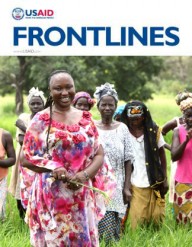

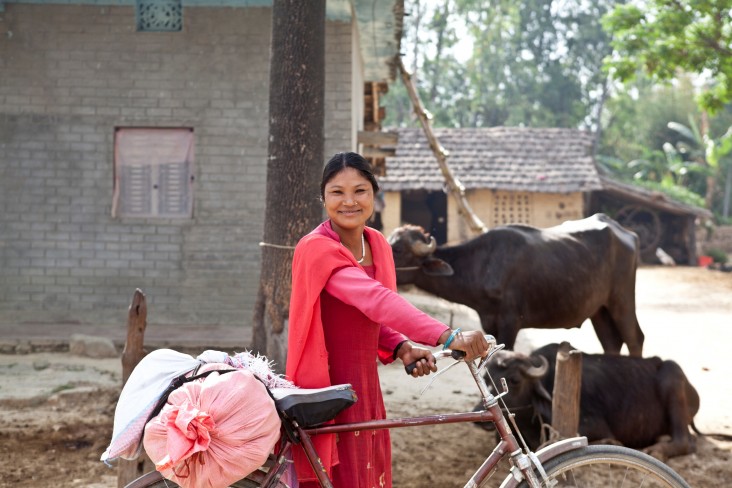
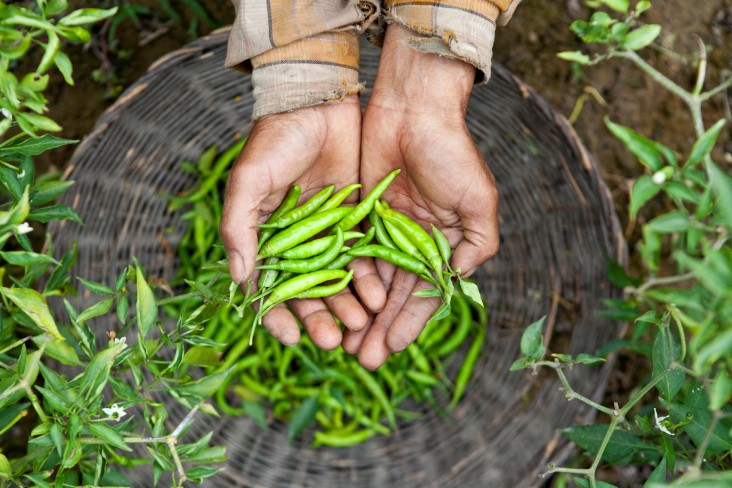

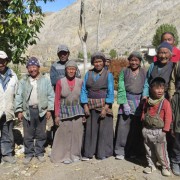
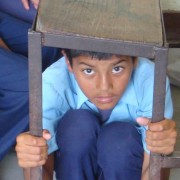
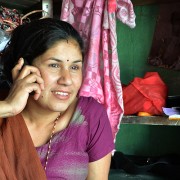
Comment
Make a general inquiry or suggest an improvement.